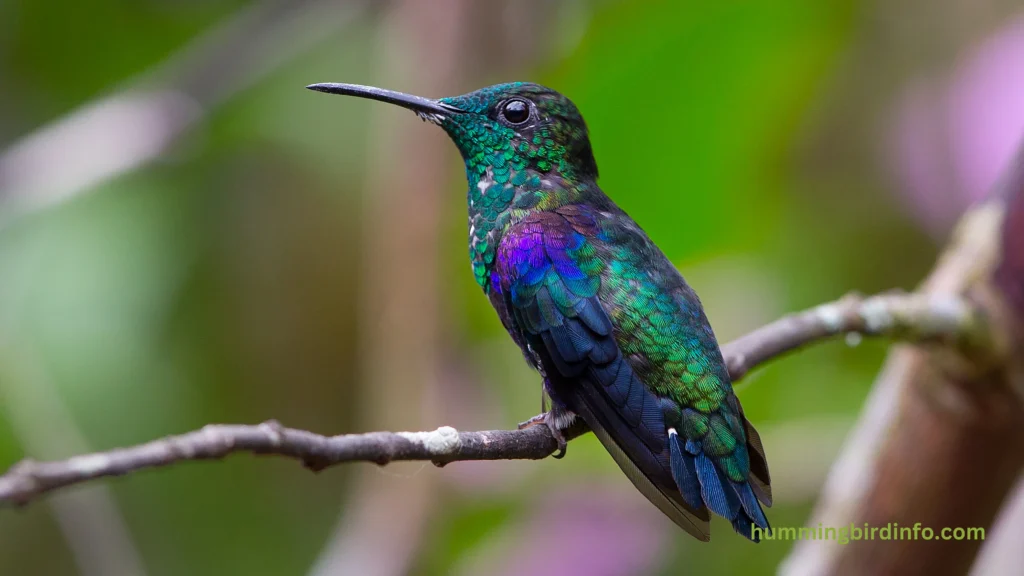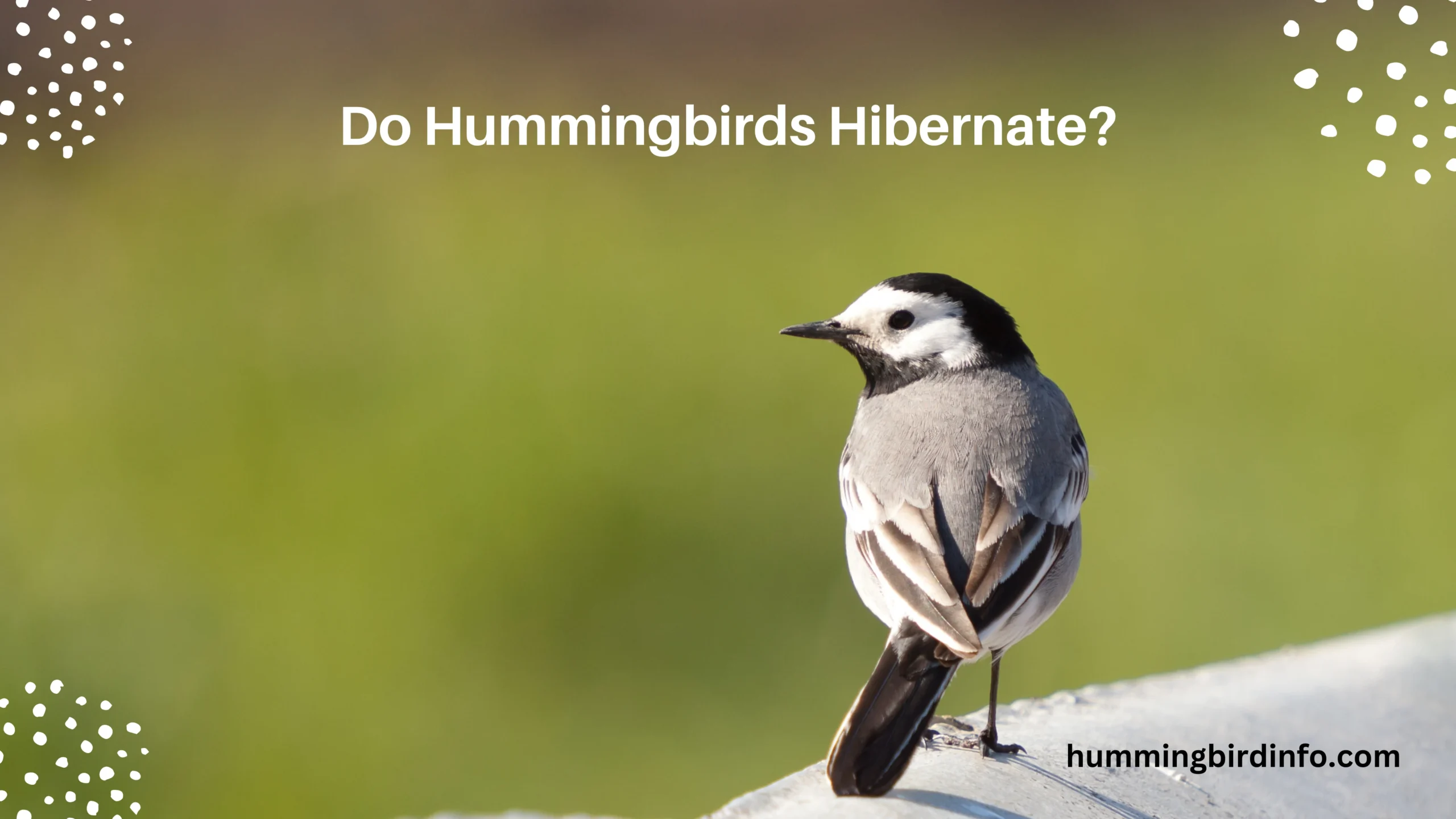Hummingbirds are often associated with their vibrant colors, rapid wingbeats, and incredible agility, making them one of nature’s most fascinating creatures.
These tiny birds have earned admiration for their ability to hover in mid-air and their insatiable appetite for nectar and insects. But when the temperature drops and food sources become scarce, what happens to these delicate aviators?
You might be wondering, do hummingbirds hibernate like other animals do in winter? The idea of hibernation brings to mind creatures like bears or bats, entering a deep sleep to survive the cold. However, hummingbirds don’t exactly hibernate.
Instead, they have a remarkable adaptation known as torpor, a state of energy conservation that allows them to survive harsh conditions. This adaptation is key to their survival during periods of extreme cold or food scarcity.
In this post, we’ll explore the truth behind hummingbird hibernation and torpor. We’ll dive into how torpor works, which hummingbird species use it, and the benefits and risks associated with this unique strategy.
By the end, you’ll gain a deeper understanding of how hummingbirds cope with winter and why their survival mechanisms are so remarkable.
Hibernation vs. Torpor
While hibernation and torpor might seem similar, they are fundamentally different. Hibernation is a long-term state of dormancy used by animals like bears and bats to survive cold winters.
During hibernation, animals experience a drastic drop in body temperature, slowed heart rate, and extremely low metabolic rate to conserve energy over weeks or months.
In contrast, torpor is a short-term state of reduced physiological activity that lasts for hours, not days or months. During torpor, a hummingbird’s body temperature drops, but not as dramatically as in hibernation.
Their heart rate and metabolic rate slow significantly, allowing them to conserve energy during times when food is hard to find, usually overnight or during cold spells.
Unlike hibernation, torpor doesn’t involve prolonged dormancy, but rather a daily cycle where the bird enters a deep state of rest to survive periods of food scarcity or low temperatures.
How Torpor Works in Hummingbirds
During torpor, a hummingbird’s body temperature can drop from over 100°F to as low as 40°F, allowing it to conserve energy by slowing down its metabolism.
The bird’s heart rate can slow from several hundred beats per minute to just a few dozen, and breathing becomes shallow and slow.
Torpor is typically triggered by cold temperatures or food scarcity. At night, when the hummingbird is not actively feeding, its body enters this energy-saving mode. This state helps it survive periods when nectar is hard to find, like during the colder months or at night when flowers are closed.
Despite the drastic energy conservation, hummingbirds must arouse from torpor each morning, gradually raising their body temperature and heart rate to resume normal activity.
The energy cost of arousal is significant, requiring a burst of energy, which can be challenging when food is scarce.

Which Hummingbirds Use Torpor?
Many species of hummingbirds use torpor to survive when food sources are limited or temperatures drop too low. For example, Anna’s Hummingbird is known to enter torpor during cold nights in regions where temperatures can dip below freezing.
Similarly, the Rufous Hummingbird uses torpor during its migration through cooler areas.
In the Andes mountains, some high-altitude species, such as Andean Hummingbirds, use extreme torpor to survive the cold temperatures at higher elevations.
The use of torpor varies widely between species, with environmental conditions like climate, altitude, and food availability influencing whether a bird will enter this state.
Not all hummingbirds rely on torpor. In regions with year-round nectar availability or warmer climates, some species may not need to use torpor as frequently. Additionally, individual hummingbirds within a species may show variation in their use of this adaptation.
Benefits and Risks of Torpor
The primary benefit of torpor is energy conservation. By dramatically reducing their metabolic rate, hummingbirds can survive overnight or through cold periods without expending the energy needed to stay active and find food.
This is especially vital in winter when food sources like nectar and insects are scarce.
Torpor also allows hummingbirds to survive cold temperatures. By entering torpor, they avoid the risk of freezing, which could be fatal. This state of reduced activity helps them outlast periods of harsh weather and food scarcity.
However, torpor also comes with risks. Torpid hummingbirds are vulnerable to predators because they are unable to react quickly. Additionally, if a hummingbird cannot find food quickly after arousing from torpor, the energy cost of waking up can become a serious challenge, especially in harsh conditions.
Prolonged or frequent use of torpor can also lead to metabolic stress, potentially compromising the bird’s overall health.
Conclusion:
Hummingbirds don’t hibernate in the traditional sense, but they employ a remarkable survival strategy called torpor. This short-term state of energy conservation helps them endure cold weather and periods of food scarcity.
Torpor is vital for their survival in winter and during migration, allowing them to survive even the harshest conditions.
While torpor offers several benefits, including energy conservation and protection from the cold, it also poses risks, such as vulnerability to predators and the energy cost of arousal.
Understanding this incredible adaptation is crucial for appreciating the hummingbird’s resilience and ability to thrive in challenging environments.
As we learn more about how hummingbirds manage their energy and navigate the challenges of the seasons, it’s clear that conservation efforts that protect their habitats and food sources are essential for their continued survival.
Contents
FAQs:
1. Do hummingbirds hibernate?
No, hummingbirds do not hibernate. Instead, they enter a state called torpor, which is a temporary, energy-saving adaptation.
2. What is the difference between hibernation and torpor?
Hibernation is a long-term dormancy with extreme physiological changes, while torpor is a short-term energy conservation state, often occurring overnight.
3. Why do hummingbirds use torpor?
Hummingbirds use torpor to conserve energy during periods when food is scarce or temperatures drop.
4. How does torpor affect a hummingbird’s body?
During torpor, a hummingbird’s body temperature drops, heart rate slows, and its metabolic rate decreases to conserve energy.
5. How do hummingbirds wake up from torpor?
Hummingbirds arouse from torpor by gradually increasing their body temperature, shivering to generate heat and raise their heart rate.
6. Which hummingbird species use torpor?
6. Which hummingbird species use torpor?








